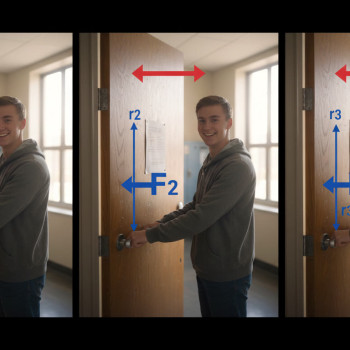Why Confidence Matters More Than Cramming
The weeks before an AP exam are a strange mix of pressure and possibility. You can spend those days frantically cramming facts, or you can build habits that expand your competence and calm your nerves. Confidence isn’t some magical mood you either have or don’t — it’s a muscle. Practice the right habits and it grows. This 4-week plan doesn’t promise instant miracles. It offers a simple, research-aligned sequence of actions that build clarity, skill, and calm: what to study, how to practice, when to rest, and how to keep momentum.

Overview: What This 4-Week Plan Does
Think of the plan as four focused phases: Diagnose, Deepen, Drill, and Deliver. Each week has a clear theme, weekly goals, daily micro-habits, and checkpoints so you know exactly where to pivot. Whether you’re prepping for AP Calculus, AP US History, AP Biology, or AP English, the structure adapts. The content differs, but the habit architecture stays the same.
Quick Summary
- Week 1 — Diagnose: Identify strengths, gaps, and highest-return topics.
- Week 2 — Deepen: Build conceptual clarity, revise core ideas, and organize notes.
- Week 3 — Drill: Simulate test conditions and sharpen timing.
- Week 4 — Deliver: Final polish, strategy fine-tuning, and mental preparation.
Before You Start: A Fast Diagnostic
Spend two focused sessions at the outset: one practice exam under timed conditions, and one review session. This isn’t about scoring yourself to feel bad — it’s about directing effort. Use your test results to highlight the topics that predict the most points for your specific AP. For example, a missed cluster of free-response questions in AP Chemistry tells you to rebuild core problem strategies; multiple short-multiple-choice misses in AP Psychology could mean you need to firm up terminology.
How to Run a Reliable Diagnostic
- Pick one full-length practice test that matches your exam format (digital or hybrid where applicable).
- Simulate the test atmosphere: timed, no phone, minimal interruptions.
- Score it and categorize every miss by skill or topic, not just by subject.
- Create a one-page “priority map” listing the top 6 topics that would most improve your score if fixed.
Week 1 — Diagnose: Map Your Path
Goal: Turn uncertainty into a precise plan. Use lightweight habits to gather data and create a realistic weekly schedule.
Daily Habits (15–45 minutes)
- 15-minute focused review of one priority topic from your diagnostic.
- 10-minute active recall session (flashcards, writing definitions, or explaining aloud).
- 5–10-minute planning: check tomorrow’s study block and list the single outcome you want.
Weekly Checkpoint
At the end of Week 1, you should have a prioritized topic list, a simple revision sheet for each topic, and two measurable goals (e.g., reduce errors on hypothesis-based questions in AP Biology by reworking three practice problems with full explanations).
Week 2 — Deepen: Build and Reinforce
Goal: Create durable understanding. Replace surface familiarity with structured knowledge that’s easy to retrieve on test day.
Daily Habits (45–90 minutes)
- Core study block (30–60 minutes): targeted reading or lesson on one priority topic.
- 20-minute problem or passage work focused on skill application, not random questions.
- 10–15-minute reflection: write one short summary or teach the concept to an imaginary student.
Tools That Help
- Active summary sheets (one page per topic).
- Problem sets organized by skill, not just chapter.
- Timed short-write drills for free-response formats.
At this stage, personalized support is a multiplier. If you’re using 1-on-1 guidance like Sparkl’s personalized tutoring, ask your tutor to model how they approach a tough problem, then copy that process. A tailored study plan from an expert tutor can cut through trial-and-error and keep your practice efficient.
Week 3 — Drill: Simulate and Sharpen
Goal: Convert knowledge into performance. This is where strategy and pacing become routines rather than afterthoughts.
Daily Habits (60–120 minutes)
- One timed passage or set of multiple-choice questions under test conditions.
- One free-response practice (timed) followed by detailed rubric-based feedback.
- Review errors immediately: rewrite the solution and note the fix.
Key Techniques
- Shadow time: after a timed section, go back and re-answer the first five questions without looking at your initial answers to test retention under fatigue.
- Rubric mapping: write a short checklist for what yields points on every free-response question type.
- Pacing signals: know exactly when to move on during a section. Practice this until it feels automatic.
Week 4 — Deliver: Polish, Rest, Execute
Goal: Peak in both skill and mindset. Finalize test strategies, keep energy high, and avoid late-stage overwork.
Daily Habits (30–80 minutes)
- Short review of weak spots (30 minutes) and practice only if it’s high-impact.
- Mental rehearsal and light physical activity for stress regulation (10–20 minutes).
- Sleep-focused routine: wind down earlier; prioritize quality sleep over extra late-night study.
Final Checklist 3 Days Out
- Confirm exam logistics: time, testing app or location, required materials.
- Pack your bag: pencils or permitted devices, ID, water, and a snack allowed by your coordinator.
- Do one final, short, confidence-building practice (30–45 minutes), then stop studying.
How to Use Practice Tests Strategically
Practice tests are not just assessment tools — they’re learning tools. Use them to identify weak points, practice pacing, and build psychological familiarity with the exam format. But don’t overdo them: a full practice test every three to seven days during Weeks 2–3 is usually enough. After a practice test, spend most of your time on the mistakes you made rather than redoing the whole test.
Practice-Test Review Template
- List incorrect items and classify why you missed them (concept gap, misread, pacing, careless error).
- For each concept gap, write a 3–5 sentence explanation and one example problem you will master.
- Turn careless errors into behavior changes: if you misread questions, practice under stricter silence or read-aloud methods.
Sample 4-Week Calendar (Weekly View)
| Week | Main Focus | Key Daily Habit | Checkpoint |
|---|---|---|---|
| Week 1 | Diagnose | 15–45 min targeted review + 10 min active recall | Priority topic map |
| Week 2 | Deepen | 45–90 min concept building + 20 min practice | One-page summaries for core topics |
| Week 3 | Drill | 60–120 min timed practice + review | Two timed full sections |
| Week 4 | Deliver | 30–80 min polish + rest routines | Exam logistics ready; confidence rituals set |
Micro-Habits That Produce Big Returns
Consistency is easier when you shrink tasks to bite-sized micro-habits. Here are small moves with outsized effects:
- End each study session by writing one sentence: “What I learned and how I would explain it.” That sentence becomes a retrieval cue.
- Do a five-question timed warm-up before any hard study block to prime focus.
- Use spaced repetition for definitions and quick facts—don’t attempt to re-memorize everything at once.
- Track one metric each week (e.g., average time per free-response, percent correct on topic X) to measure real progress.
Managing Stress and Sleep
High performance is not just cognitive — it’s physiological. Your brain consolidates memory during sleep. A tired brain makes careless mistakes even on material you know. Make sleep and stress management part of your plan.
Practical Tips
- Keep a consistent bedtime and wind-down routine; switch off screens 30–60 minutes before bed when possible.
- Short movement breaks (even a 10-minute walk) increase alertness and reduce anxiety.
- Use breathing techniques before timed sections—box breathing (4-4-4-4) calms nerves quickly.
When to Get Extra Help
If after a week of targeted practice a concept still feels murky, that’s a signal to get help. One-on-one tutoring can diagnose subtle gaps and offer targeted strategies in minutes a solo study session may take weeks to find. Sparkl’s personalized tutoring, for instance, is designed to give 1-on-1 guidance, tailored study plans, expert tutors, and AI-driven insights that accelerate the cycle from confusion to clarity. Use tutoring sessions to practice under observation and to learn the examiner’s expectations for free-response scoring.
Example: Applying This Plan to AP Calculus AB
Week 1: Diagnose with a timed multiple-choice set and one free-response. Identify whether limits, derivatives, or integrals need priority. Create a one-page formula and method sheet.
Week 2: Deepen by building concept maps for derivatives and integrals. Practice interpreting graphical information and connecting formulas to real contexts.
Week 3: Drill with timed sections, focusing on time management for tricky free-response questions. Practice showing concise justification for each step to maximize rubric points.
Week 4: Deliver by polishing common problem types and rehearsing the order in which you’ll approach the exam: quick scan, do easy multiple-choice first, then time-block free-response.
Common Pitfalls and How to Avoid Them
- Overloading day-of plans — keep the last 48 hours light and strategic.
- Relying only on passive reading — active problem solving and teaching are what create retrieval strength.
- Ignoring logistics — double-check exam format (digital or hybrid), app requirements, and allowed materials well before the day.
What to Do on Test Day
Morning routine: hydrate, eat a balanced breakfast, do a 10-minute warm-up of light practice (a few quick problems or a short passage), then switch to confidence mode: remind yourself of three things you do well on this exam.
During the exam: mark and move. If a question is taking too long, flag it and keep going. Use your practice-tested pacing plan; trusts the drills you’ve done for weeks.
How to Measure Progress Beyond Scores
Don’t reduce progress to a single number. Track improvements in the clarity of explanations, reduced time to answer specific question types, and your emotional response to practice tests (are you less anxious?). These qualitative gains often predict better exam-day performance than a single practice test score.
After the Exam: A Short Debrief
Whether your exam went exactly as planned or not, take 30 minutes to jot down what worked in your prep routine and what didn’t. This helps you build better systems for future APs, courses, or college-level challenges. If you plan to continue with other APs or classes, use your notes to craft an improved study rhythm.

Parting Wisdom
AP preparation is as much about building a confident mindset as it is about mastering content. This 4-week habit plan gives you a structure you can trust when the pressure is real: diagnose where you are, deepen your understanding, drill the mechanics, and deliver with calm. Small, repeatable actions win more than last-minute marathons. If personalized direction would help, a few targeted tutoring sessions can sharpen your path and save you hours of aimless review.
One Final Checklist
- Have a clear 4-week calendar with daily micro-goals.
- Do regular, timed practice tests and a precise review after each one.
- Focus on sleep, stress management, and realistic pacing habits.
- Get 1-on-1 help when concepts remain unclear — targeted tutoring accelerates progress.
- Finish with confidence rituals: a short warm-up, a quick scan strategy, and faith in the habits you built.
Ready to start? Open your calendar, schedule your diagnostic test this week, and commit to one small habit today. Confidence is a habit — and you’re already on your way.























No Comments
Leave a comment Cancel